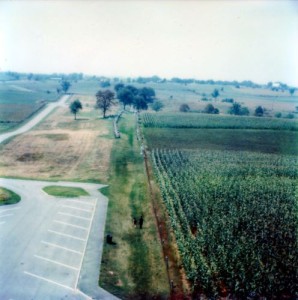So, today one of my co-workers said, “There aren’t any good parks in this part of the city.” Well, one of the things that Alex and I do on our weekends is explore city and county parks (and parks beyond the city and county), so I took that as a challenge.
At first, one of the pharmacists suggested Friedrich Wilderness Park (one of my personal favorites), which is up a ways on Interstate 10. I then asked what my coworker considered to be “this part of the city,” and she said, “north of downtown.”
I then listed Government Canyon State Park and Hardberger Park and Walker Ranch Park and Denman Estate Park. The other pharmacist said, “There’s one on Bandera, isn’t there?” This is Schnabel Park.
Finally, before I got too out of control, I said, “I can do this all day, but just one more. Eisenhower Park, which is straight up Northwest Military until you run out of street.”
I didn’t even get to mention Guadalupe River State Park, or Crownridge Canyon Park or the Cibolo Nature Center (which is in Boerne and the last time we were out there, there was talk about making the other side of City Park Road a park, and they might just have done this by the look of things) or Stone Oak Park (which was not as wooded as Google Maps made it look, so Alex and I promised to come back once the weather was cooler) or any of the probably a dozen other parks I’ve visited in the last couple of years. I even found another new park while I was writing this post — Panther Springs Park.
I really can do this all day, but it’s my bedtime now so I’m going to stop here. However, since you are not a captive audience and can leave whenever you want, I will be writing up all of these parks (and probably some more that I can’t remember right now) as individual South Texas Destinations posts in the future.
Before I go to bed, however, one more thing. I had two problems with essay questions when I was in school. One of these was that I have some sort of motor coordination disorder. I’m not actually handicapped so you’d notice, but I have always had poor both fine and gross motor skills (this may be part of why walking is my major form of exercise — I know I can do it successfully). As a result of this motor coordination problem, writing by hand is very tiring for me. I’d get tired long before I ran out of ideas on essay questions (I also never knew that other students didn’t have this kind of hand fatigue from writing — I always sort of assumed that the pain and fatigue was part of the test). The other is that it never occurred to me that the point of essay questions was to just dump whatever you can remember onto the page. It seemed that they should be written well. Otherwise it wouldn’t be an essay so much as a bullet-point list. As a result, if I couldn’t make an idea fit into the flow of what I was writing, I would just leave that idea out, which led me to often only listing part of what I knew.
All of this is in aid of me sticking in an idea that I can’t make flow with the rest of this post. Back about eight years ago or so, San Antonio came out really high on one of those “fattest cities” lists. One of the websites reporting on it, possibly the originating site, blamed at least part of it on having a very low number of parks per capita. While I was writing this, I found one article, from 2009 (San Antonio was #3 on this list), but I don’t think it’s the one I was thinking of (I swear I remember my ex talking to me about it and we split up before 2009). The number of parks in the 2009 article was 214. It seems like every street corner has a park these days. I wonder if some of the parks that I’ve been visiting, and that I will write about, were created after 2009. The Howard W. Peak Greenway System, which are paths that follow the creeks, was approved by voters for the first time in 2000, but I don’t know when the first trails opened. I think that I may make a note on my posts on city parks what year they were founded, just to see if my perception that many of these parks date from after that checks out.
As to whether these kinds of rankings actually mean anything, I found this article at PubMed, which I am linking to so that I can save the link to read in the future. Maybe I’ll read it tomorrow, while I’m on my lunch.

